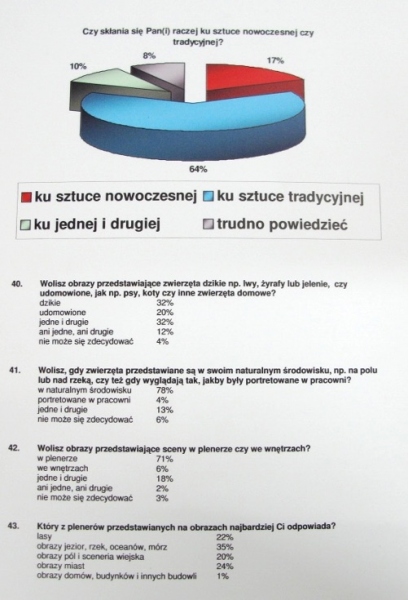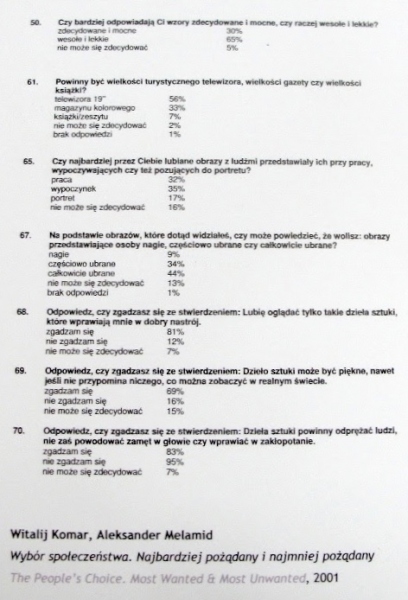Vitaly Komar and Alexander Melamid
The Choice of Society. The most desired and the least desired
Between 1994–1997 Vitaly Komar and Alexander Melamid worked on The People’s Choice. Most Wanted & Most Unwanted project. They commissioned surveys in 14 countries, ranging from the United States to online users, on the basis of which they created the most and least desirable images in individual countries and globally (online). In 2001, they carried out the Polish version of the project, entitled The Choice of Society. The most desired and the least desired. The research was carried out by Demoskop, and based on the results of this research the paintings were created by a student of the Academy of Fine Arts.
The results of the research conducted in Poland were consistent, unsurprisingly, with the results from other countries. The painting most liked by Poles turned out to be a mountain landscape with a lake with deer, one would like to say “deer rutting season”. Favourite colours, as elsewhere, turned out to be green and blue. And what did Poles dislike about painting? It probably won’t surprise anyone either: geometric abstraction. The pink-orange hue with hints of gold also wasn’t popular.
The aim of Komar and Melamid’s project was to challenge the relevance of statistical research in relation to art, especially when questions asked in the survey concern such general issues as a favourite colour or a theme. The value of art depends on entirely different components. They also judged the rightness of choices made by the majority of society and the extent to which artists should be guided by these choices. The most basic question arising from their design is perhaps this: should artists serve the tastes of most people or rather shape them skilfully?
Vitaly Komar and Alexander Melamid are an artistic duo from the Soviet Union who gained worldwide recognition after moving to the USA. Together they studied at the Moscow Art School, and later at the Stroganov Institute of Art and Design. Persecuted in the USSR for thrir “improper” art, they emigrated to Israel in 1977 and a year later to New York. In 2003, after 36 years, they ended their collaboration. Their works belong to the conceptual trend in which cognitive processes associated with them are more important than their material forms. Komar and Melamid focused on statistical research, noting the importance of this field in modern societies and the fact that statistics is becoming a kind of a seeming synonym of objectivity.


